Bench Press Wrist Position: The Important of Neutral Orientation
An often overlooked part of bench press form is the position of the wrist - a major error, as the hands and wrists play a major role in controlling the barbell during the exercise.
Though it may seem somewhat complicated, in truth, all that is needed is to ensure that the wrist is aligned with the forearms in a manner that distributes force throughout the entire arm. This position is known as a “neutral” orientation, and is the most stable and least likely to result in injury.
To ensure that your wrist is in a neutral position, the entire outer extremity of the arms should be in-line with the barbell, meaning that they form a relatively straight path from the barbell itself to the bottom of the forearms.
Why is Wrist Position Important in the Bench Press?
When running or jumping, the position of the ankles and feet will directly influence the actual execution of the movement itself; Having the lower extremities in a disadvantageous position can reduce the height in which an athlete may jump, or result in injury as they run.

The bench press is no different, as a poor wrist and hand orientation will not only make the lifter less effective at performing the exercise, but also potentially result in discomfort and injury in the more extreme of cases.
Makes a More Stable Movement
When the wrists are in a less-than-advantageous position, the forearms may become less influential over the stability of the movement, and the bar may have less surface area (of the hands) to distribute load through.
This can cause the bench press to become less stable - a potentially injurious error that may result in injury to the elbows or wrist tendons.
Prevents Wrist Injury and Discomfort
Having the wrists stacked in such a manner that they are lined up with the forearms prevents shear force from becoming an issue, thereby greatly reducing the risk of injury as the connective tissues of the wrists are not subjected to force at an angle they were not built to withstand.
Furthermore, keeping the wrists and hands in a neutral position allows the lifter to maintain a far better hold over the bar than if they had a less than optimal wrist orientation.
Not only will having a neutral wrist and hand position prevent injuries to the wrist, but it will also help prevent the bar from slipping out of the lifter’s grasp.
Allows for Better Force Translation
Much of the counter-resistance produced by the lifter is produced by the triceps brachii and pectoral muscles, both of which translate the force they produce through the forearms and wrists so as to lift the barbell.
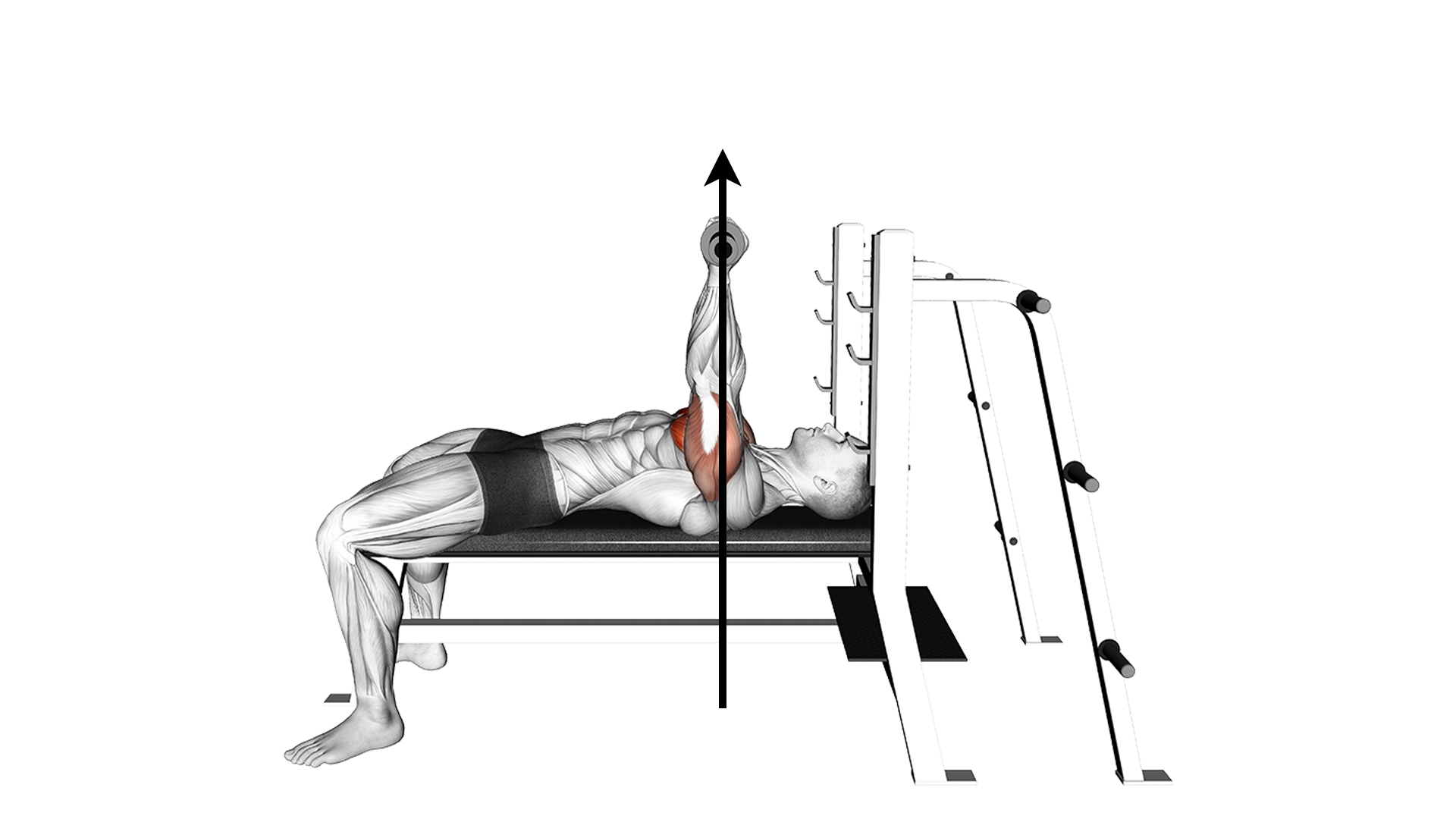
If the wrists are bent in a manner that produces an unoptimized path from the elbows onwards, this can cause some force to be lost, thereby reducing the amount of weight that the lifter can move and creating even more pressure along the connective tissues of the wrists.
This further ties into the aforementioned poor control of the barbell, as lesser stability and a poorer hold over the bar will also lead to less weight being moved as more energy is spent simply stabilizing the movement itself.
Ultimately, if the lifter wishes to maximize how much they can bench press, fixing their wrist positioning is of high importance.
What Does a Neutral Wrist Position Look Like?
A neutral wrist position is more than just the curvature of the wrist relative to the forearms - it is also the placement of the hands themselves, and the degree to which the forearm is aligned relative to the wrist itself.
When viewed from an external perspective, a neutral wrist position will appear as if the hands, wrists and the upper section of the forearms are pointing directly upwards to the barbell, and that the load of the barbell is distributed through the palms and wrists and into the forearms.
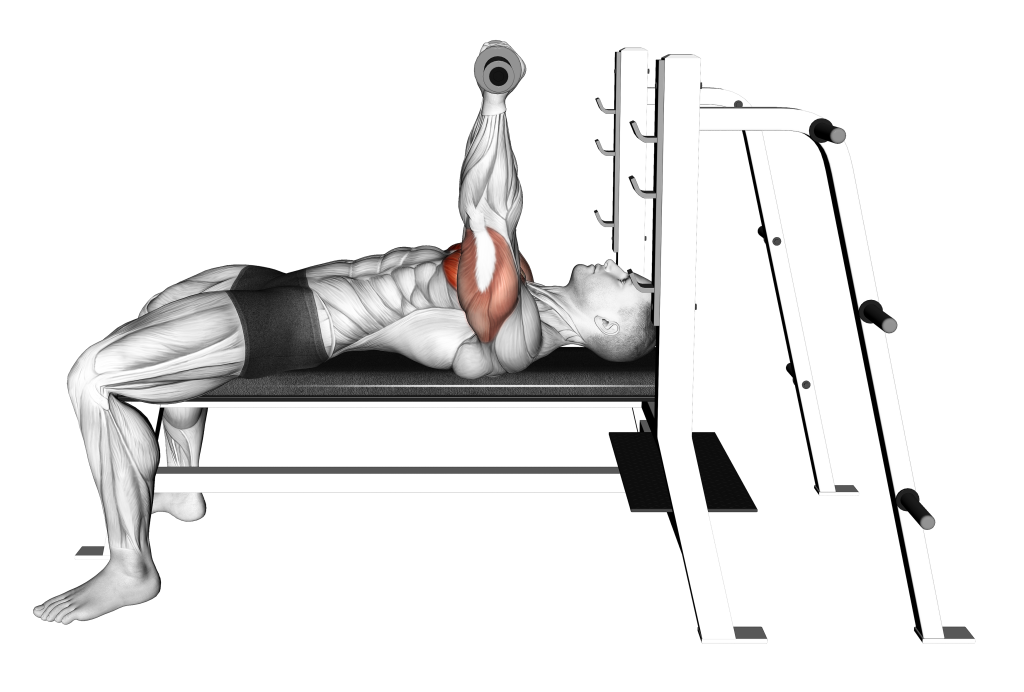
From the lifter’s view, the back of the thumbs may be pointing at one another, with the first knuckle of the middle fingers forming a vertical line with the center of the wrist.
Some small deviation from this is to be expected, of course, and some lifters may find that bending the wrists back slightly as they perform the exercise is more comfortable.
Nonetheless, it is important to avoid any excessive bending of the wrists as much as possible, as doing so can easily lead to injury.
What it Shouldn’t Look Like
Poor wrist positioning will appear more as if the hands are askew at an angle, with the wrists turned to one side beneath the bar and the bar itself resting on only a small section of the palms (such as the fleshy pad of the thumb or the fingers) as it is gripped.
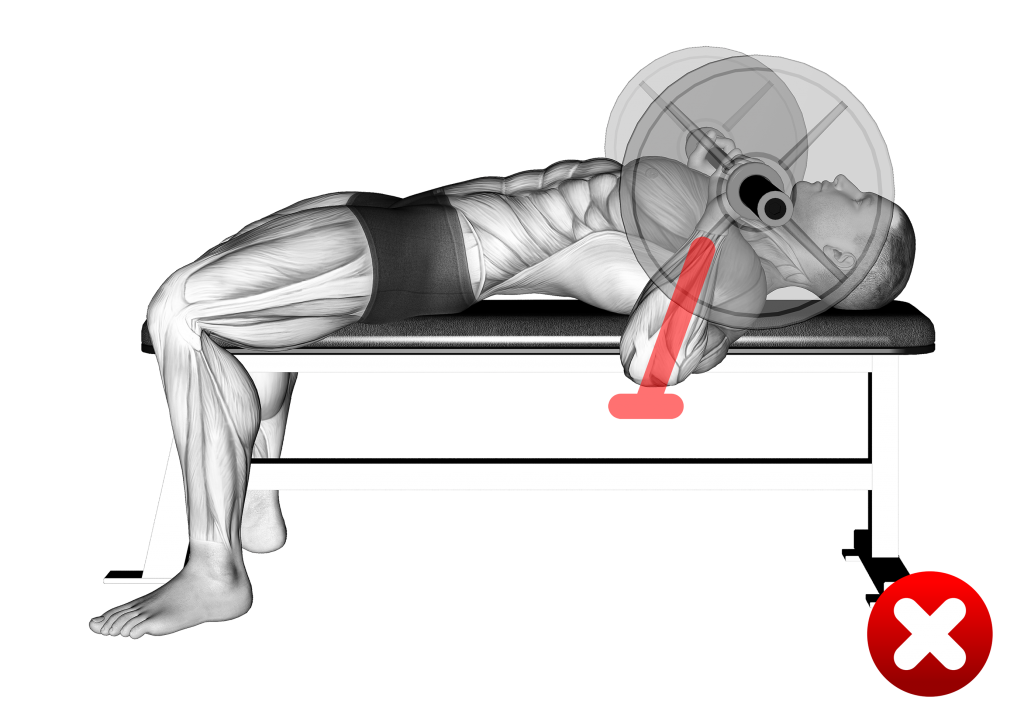
This can further extend into the forearms, of which may also be pointed at an angle as the elbows are flared to the sides, resulting in an almost diagonal appearance during the lock-out (and descending) portion of the movement.
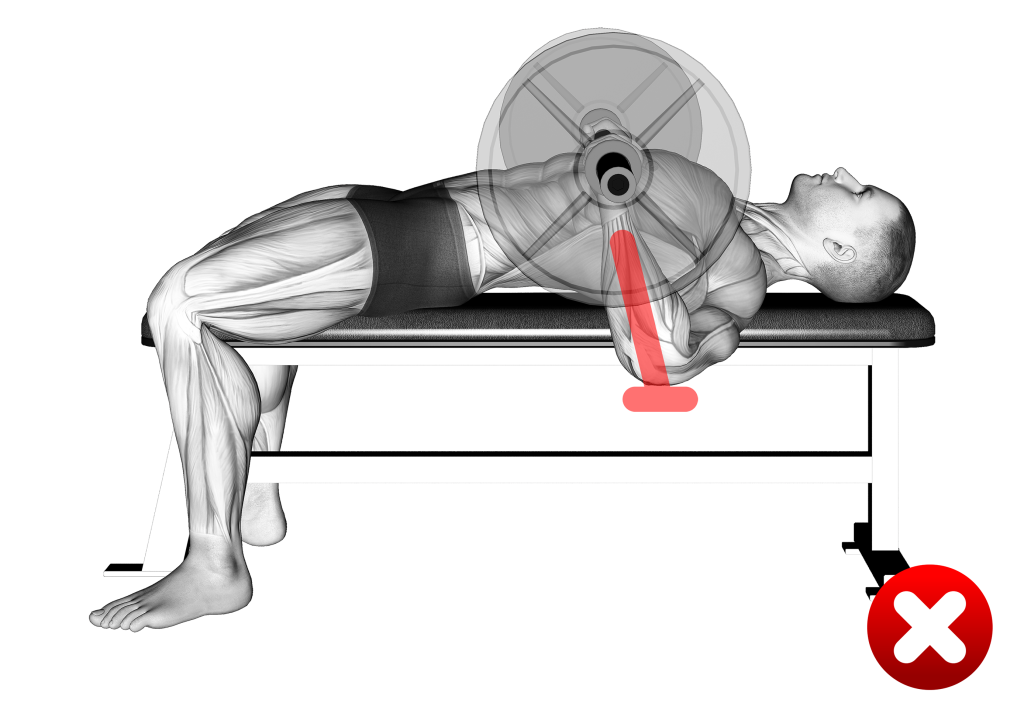
Cues for Ensuring Correct Wrist Form During the Bench Press
Certain cues can help a lifter tell if they are failing to maintain a proper wrist position, and will help optimize their bench press execution as a whole.
Proper Hand Width
Setting the hands an appropriate distance apart is the most important cue to maintaining proper wrist positioning. If the hands are set too narrow, they may bend outwards as the lifter exerts force through them, whereas setting them too far apart will cause them to bend inwards.
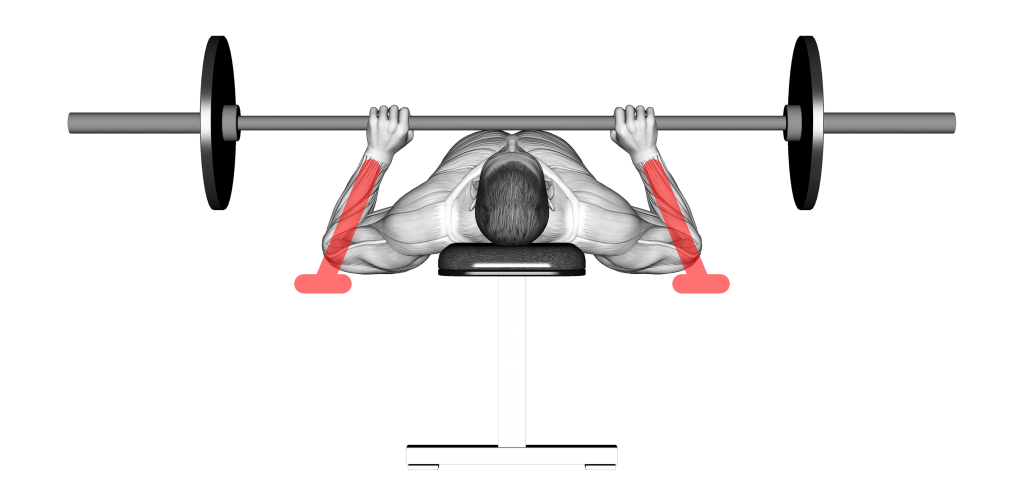
While it will vary between individuals of different proportions and levels of mobility, the general advice is to set the hands at approximately shoulder-width apart, if not slightly wider.
Novice lifters may wish to experiment with their grip width and see what distance works best for their own physiology, however.
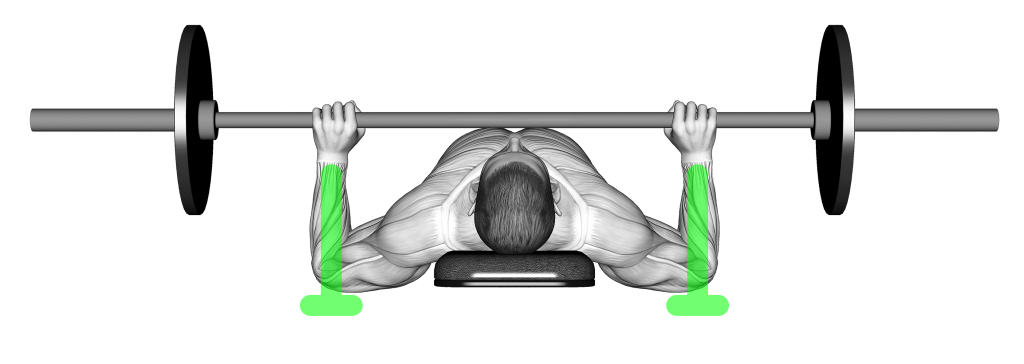
Avoid the Thumbless Grip
Otherwise known as the “suicide grip”, the thumbless bench press grip is one where the lifter holds the barbell with only their four fingers, leaving the thumb curled up, rather than around the bar.
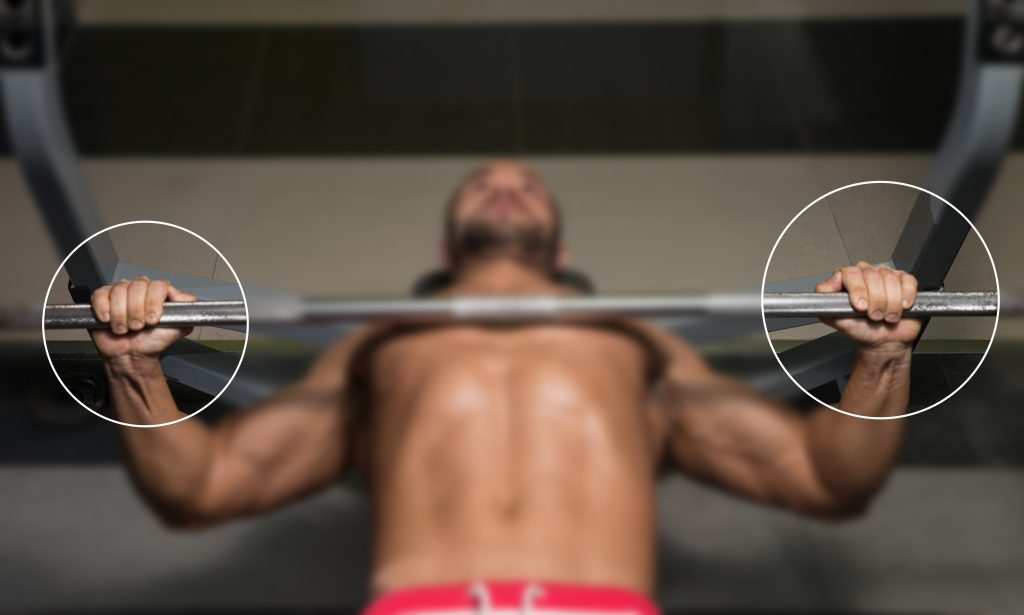
Though there are many reasons why advanced lifters may use the thumbless grip, it is generally considered to be unsafe and will make maintaining a proper wrist orientation even more difficult.
In order to ensure that the wrists and hands (not to mention the lifter themselves) are safe, a proper grip should be used, thumb included.
Squeezing the Bar
To help keep the wrists and the barbell secure, it is advised that lifters firmly squeeze the bar as they perform the bench press.
Not only will this prevent the lifter from unconsciously bending their wrists, but it will also help stabilize the movement as a whole.
Avoiding Wrist Hyperextension and Flexion
Proper wrist neutrality is characterized by the wrist being “stacked” vertically atop the distal end of the radius and ulna - or the two bones of the forearms.
As such, allowing the wrist to bend either backwards (extension) or forwards (flexion) will draw the wrists out of such a neutral orientation, causing poor load distribution and force translation.
Clicking, Pinching or Pain in the Wrists or Forearms
Less of a form cue and more of a general warning sign; any sort of discomfort in the wrist joints, be it painful or not, may be a sign that the wrists are struggling due to poor orientation during the bench press.
If such symptoms are experienced, it is best to stop performing the bench press and to reassess the lifter’s form with an unloaded bar. Check wrist orientation in a multi-axial manner, the position of the hands along the barbell, and even the barbell’s touchpoint within the hands.
How to Fix Poor Wrist Positioning While Bench Pressing
If the lifter finds that their wrist positioning during the bench press is less than optimal, they should begin with the largest culprit before moving onto more subtle causes.
Checking Hand Position and Bar Contact Point
First, the lifter should investigate their grip width and whether they are gripping the barbell correctly.
Wider than shoulder-width apart, with the bar resting along the center of the palms, rather than atop the fingers or the pad of the thumb; All five fingers should be enclosed around the bar as well.
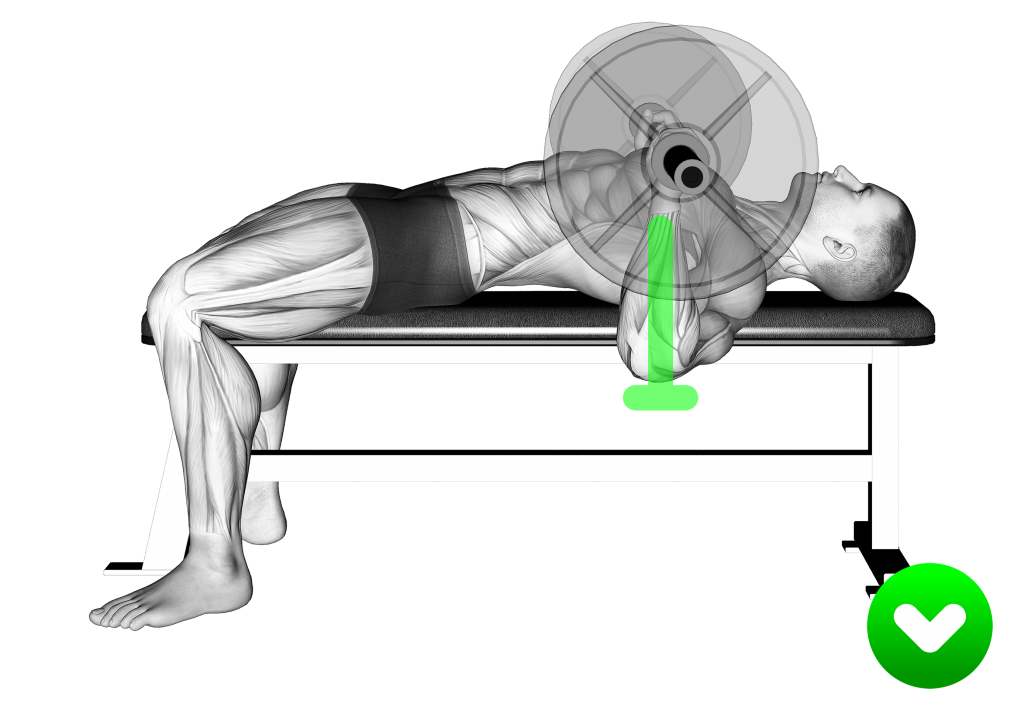
Checking Wrist Orientation
If no issue is found, the lifter will then investigate the wrist themselves - if they are bending laterally, the grip width should be altered accordingly. If they are bending forwards or backwards, the lifter must consciously control their wrists as they perform the bench press.
Checking Forearm Angle
If the wrist’s orientation and the lifter’s manner of gripping the bar are not at fault, the forearms themselves could be the cause.
Lifters should seek to minimize elbow flaring and to move the forearms in a bilateral and even manner - moving one forearm before the other could cause the wrists to bend out of the correct position, as will overly involving the forearms in a manner that causes wrist flexion.
Non-Technique Causes of Poor Wrist Positioning
If the lifter has checked all other form cues and possible issues in execution yet still experiences discomfort during the bench press, it may be more of a physiological issue than one of lifting technique.
Issues in wrist mobility or tissue strength could be the cause, and as such will require some level of rehabilitation in order to correct. If a physiological issue is suspected to be behind the lifter’s wrist discomfort during the bench press, it is important for them to cease performing the exercise and to seek the advice of a medical professional.
Techniques, Stretches and Exercises to Correct Poor Wrist Positioning During the Bench Press
In cases where the lifter is failing to maintain the right wrist position due to non-execution related issues, trying out a few of the following strategies may be beneficial.
Keep in mind that these are only meant to fix relatively small issues in otherwise-healthy lifters, and those at risk of injury or who are entirely unfamiliar with proper bench press technique may be better served with larger-scale methods of correcting their wrist problems.
Wrist Rotation Drills
When poor mobility is a factor in bench press wrist positioning, lifters may see some benefit in performing wrist mobility drills that target the joint in all possible directions.
Dynamic wrist rotations, stretches for wrist flexion and extension alongside those that also work on wrist pronation and supination may be beneficial.
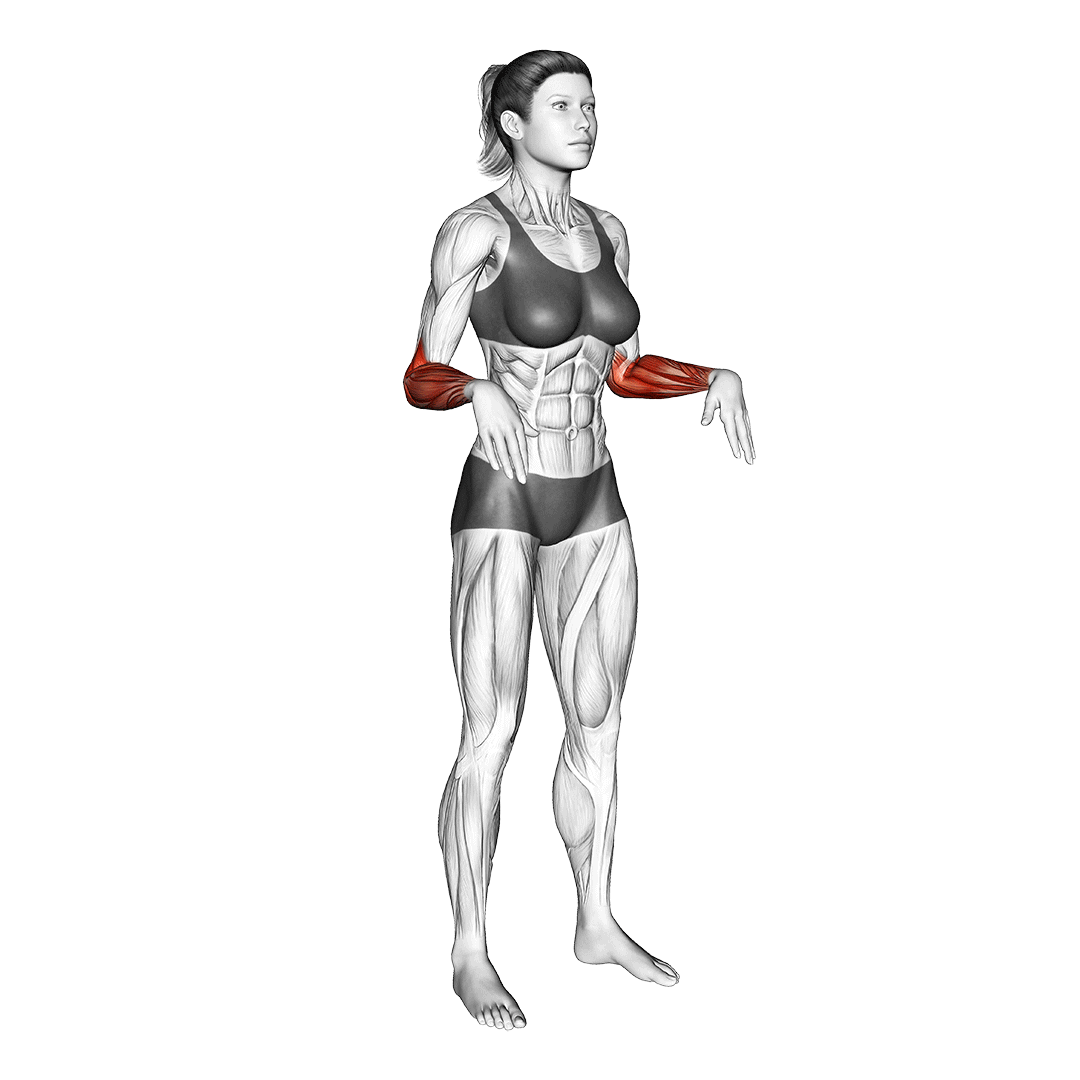
Although movement of the wrist in this manner may seem unrelated to proper bench press wrist positioning (as the wrists are static and in a neutral position), poor mobility of the wrist can directly cause pain when force is translated through them, thereby affecting exercise performance.
Banded Wrist Flexion and Extension
Lifters who fail to maintain wrist neutrality due to the load forcing their wrists to bend can try resistance band exercises for strengthening the wrist in such a manner.
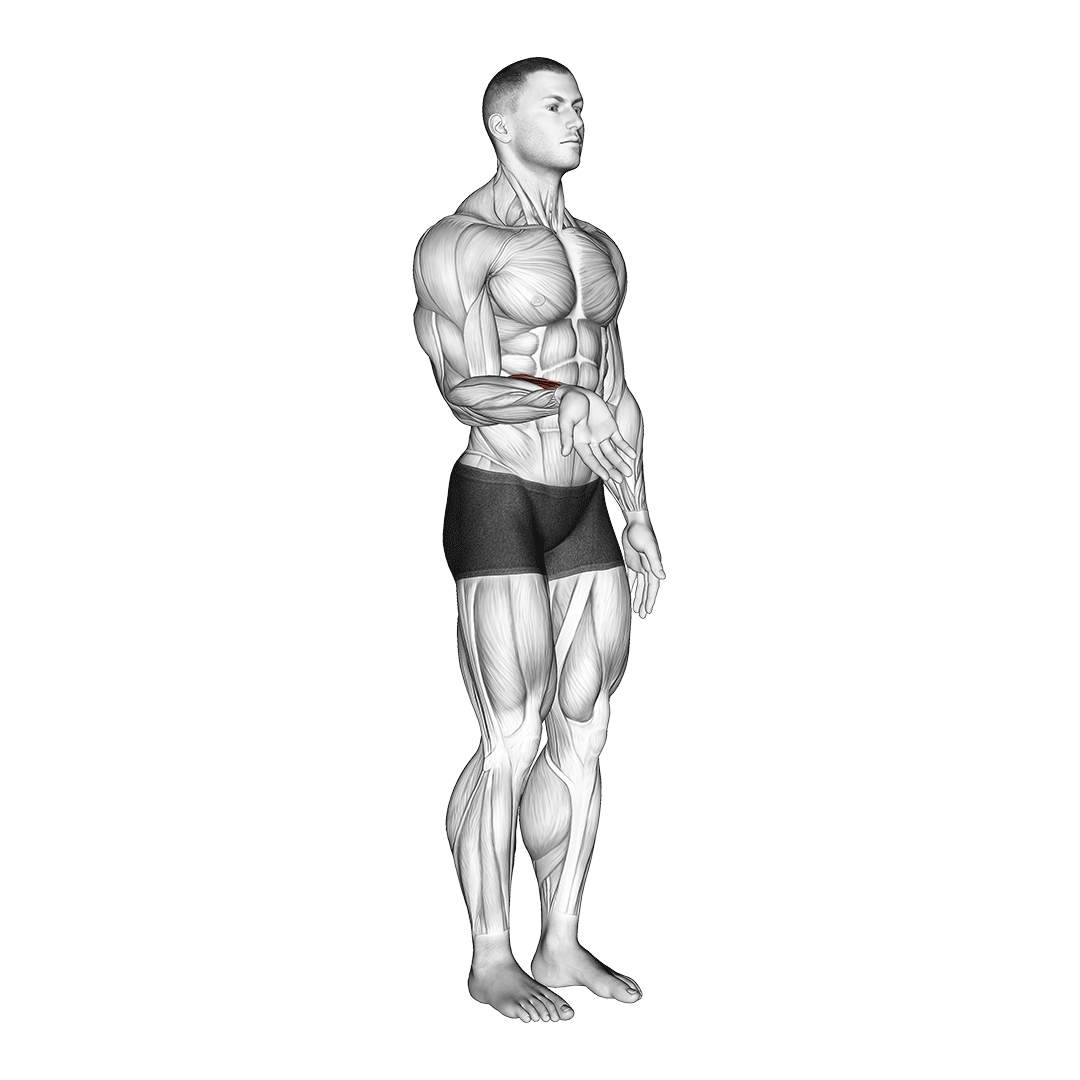
If they find that their wrist bends backwards during the bench press, they may try banded wrist flexion exercises. If forwards, then banded wrist extension exercises.
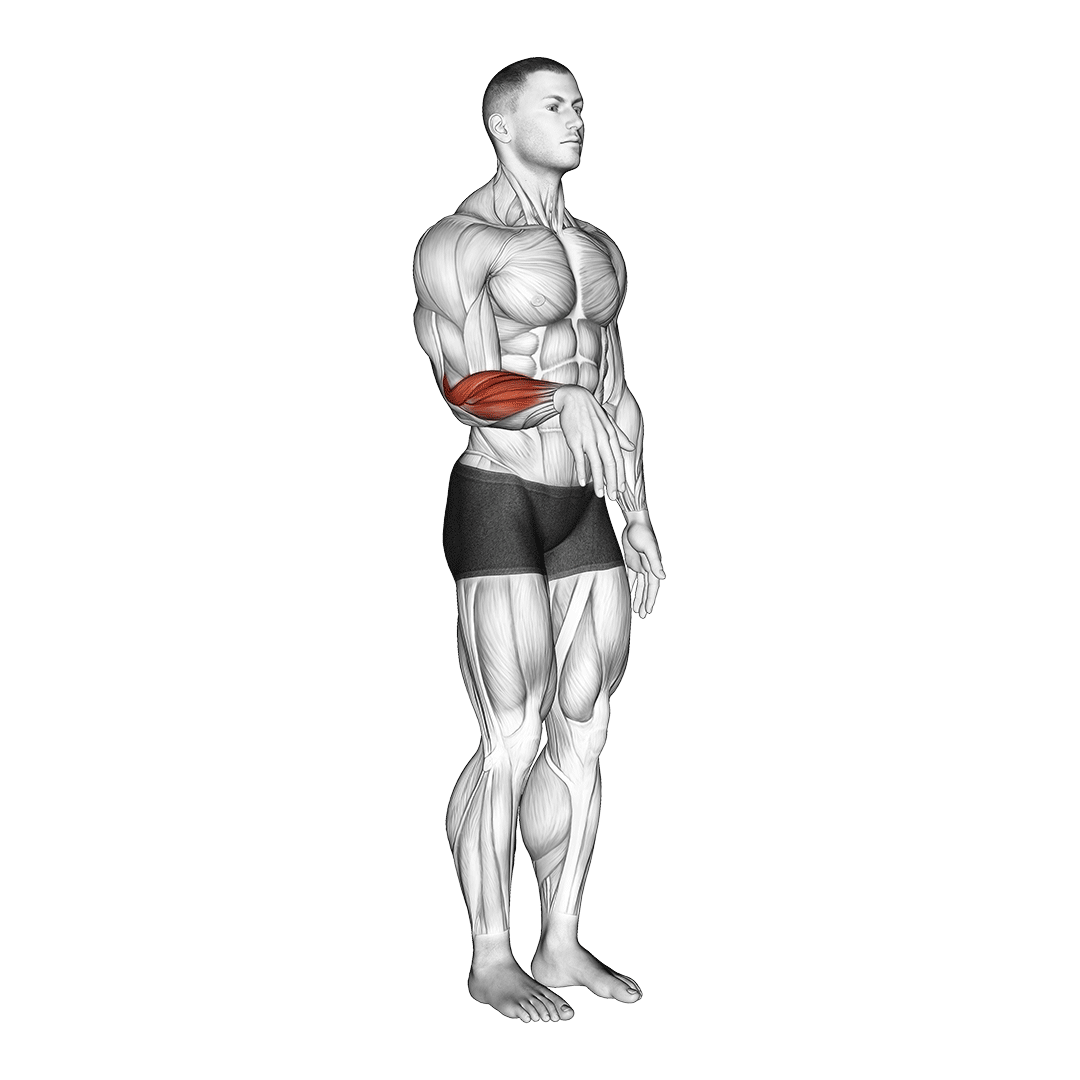
Kettlebell Isometric Forearm Holds
As a more general method of practicing proper wrist positioning under load, lifters may try kettlebell isometric holds.
This is done by hanging the wrist and a kettlebell off a table, with the lifter attempting to maintain a straight (and neutral) wrist orientation for as long as possible, despite the kettlebell’s weight drawing the hand downwards.
Using Wrist Wraps
As a sort of "band-aid", wrist wraps may be used to help support the wrists during particularly heavy bench press sets.

Wrist wraps are a piece of fitness equipment used to maintain wrist neutrality through mechanical means, and are most often used by strength athletes attempting to move loads that are too heavy to control with the wrists.
It is important to keep in mind that wrist wraps do not build up wrist or forearm strength, and that any issues the lifter may have with wrist positioning during the bench press will still persist once the wraps are removed.
Switching to Dumbbell Chest Presses
As an alternative, lifters may wish to substitute out their barbell bench press with its dumbbell-based counterpart.
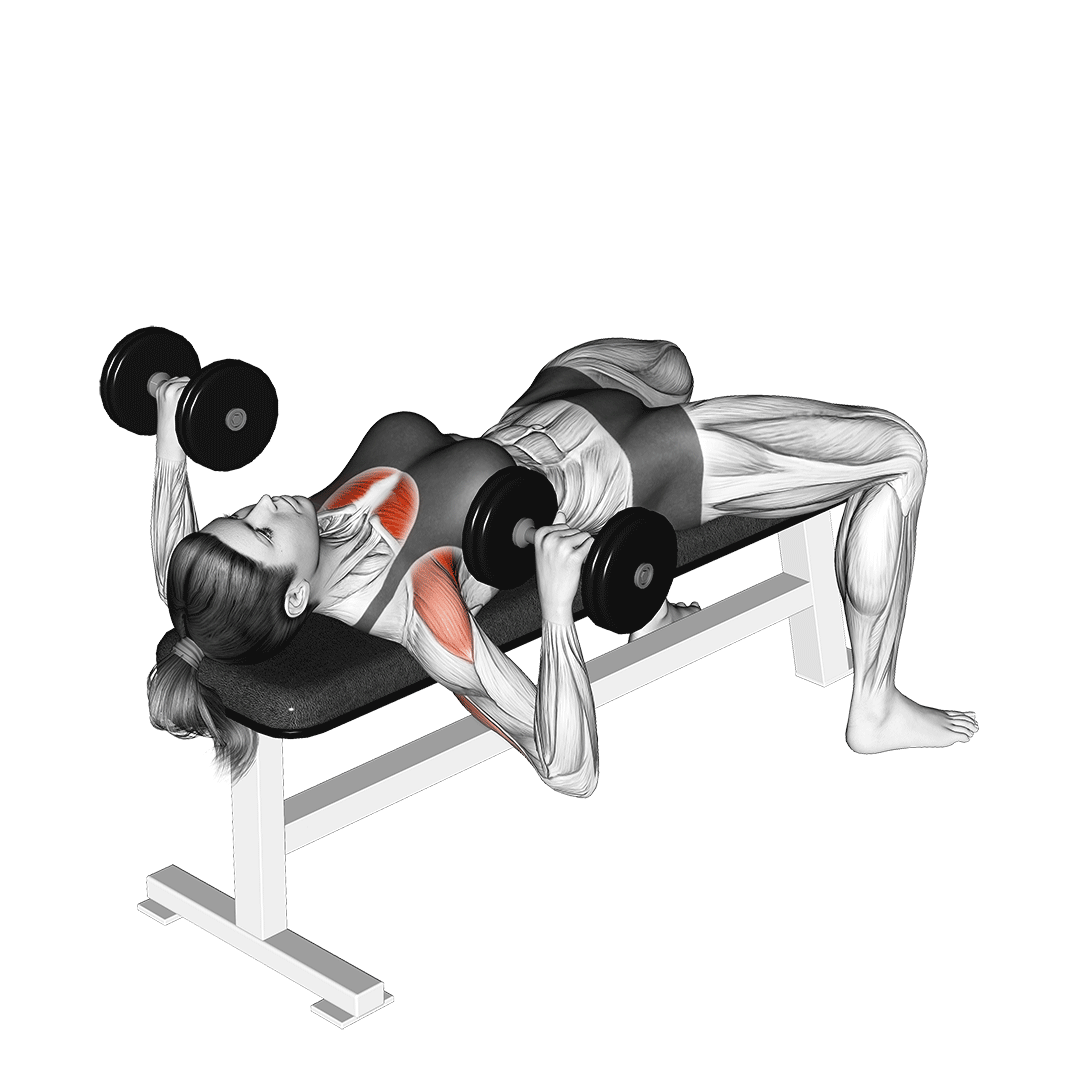
This will greatly reduce the amount of pressure placed on the wrists, and entirely eliminate certain issues like lateral wrist deviation as the dumbbells are far smaller and easier to hold in a neutral wrist orientation.
Final Words
Wrist positioning is a vital aspect of any lifter’s bench press technique - but it is ultimately only a portion of it.
Remember that the body acts as a chain, meaning that an issue in one area can directly affect another part of the body that is seemingly unrelated. Chances are, if your wrist positioning is an issue, there may be other issues in bench press execution that you are not aware of.
If you are having trouble getting your bench press form down, it's a good idea to seek out the advice of a professional athletic coach, as they can assess and correct lifting form in a way that self-correcting cannot achieve.
References
1. Falsone, S. F. (2018). Influence of grip width and wrist position on muscle activation during the bench press. Journal of Strength and Conditioning Research, 32(1), 129-135.
2. Baechle, T. R., & Earle, R. W. (2008). Essentials of Strength Training and Conditioning. Champaign, IL: Human Kinetics.
